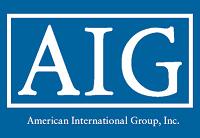As I mentioned in another article, I returned to the stock market in March after a long absence to take advantage of the very low stock prices of large companies. So far so good with my choices, Citigroup and AIG, as both have produced good results. In spite of the dire warnings of stress tests and the difficulties these and other financial institutions have endured during the financial crisis, in less than two months I doubled my money.
The market turned around somewhat and the stocks went down in the last month, but nowhere near where they were when I bought them, so I'm still making 50% on my investment after only three months.
I figured that with these two giants and with the money the government loaned them in the Stimulus Package to avoid bankruptcy, that they'd eventually move back up considerably from the low to high one dollar range at which I bought them. In particular, because Citi was selling for $27 last year and $56 the year before, and AIG had a price of $31 last year and over $70 a couple of years ago. Slow and steady, the economy is improving and with patience I think I'll be proven right.
However, my beef with AIG is with the recent proxy statement they sent through my broker for the Stockholders Meeting this coming Tuesday, June 30, wherein, among other things, they want to do a reverse stock split of 1:20, meaning that if you had 1,000 shares you'll wind up with fifty. If you had ten thousand shares you'll have 500. They will initially multiply the share value by a like amount, so you won't lose any equity, but your chances of growing your investment have become pretty slim.
The insurance company's rationale is that, because their stock is valued so low -- it just sold for $1.46 -- it has lost institutional investors, many of which will not buy a stock that is priced under five dollars. But worst, they ominously warn, if the stock falls below a dollar as it did up until a couple of months ago, the New York Stock Exchange may delist them. The fact that the stock rose to over two dollars and has never declined below the mid one dollar range in over two months would appear to make this concern overstated.
However, what mostly bothers me as a small-time investor is that by reducing the number of shares by one twentieth, if the company prospers to a much higher level of equity, the shareholders will not see their investments grow nearly as much because the increases of the share prices would have to rise at astronomical rates per day or week to effect the same profit margin. For example, if -- to round things out -- the share numbers are cut by twenty, they will raise the price from $1.50 to $30. It is much more reasonable to expect that the $1.50 might rise to, let's say $20 eventually -- considering the heights from which it previously fell -- than for a $30 stock to get to $600 a share, which it would have to achieve for someone with fifty shares to reap the same results as the person who originally had one thousand shares if the stock climbs to $20.
Plus, with an inflated price of $30 and considering the recent economic struggles of AIG, how many institutional brokers are going to want to pay that much for a company not yet back on sound footing? What I find interesting is that, in the proxy statement, the Board of Directors does not warn against this risk. They only tell you the reasons they want to reverse split the stock, and cover themselves slightly with "In addition, the reverse stock split may not increase the price of AIG Common Stock or may not lead to a sustained increase in the price of AIG Common Stock, which would prevent AIG from realizing some of the anticipated benefits of the reverse stock split." Interestingly they don't spell out the real danger, which is that the stock would now have greater room to free fall and the shareholder would have much fewer shares to cushion the blow.
Then, to top it off, they go on -- amazingly with a bit of cheek, I think -- to say "the reverse stock split may not result in a stock price that will attract investment funds or institutional investors or satisfy the investment guidelines of investment funds or institutional investors." But wasn't that one of their prime enticements to do this? Is this a shell game they're putting before us?
Not to mention another desired goal is to increase the potential or "authorized" shares of common stock by another five billion or so, which, if ultimately sanctioned by the Board, would dilute everyone's shares still further.
And, as stated, the Board of Directors doesn't at all address the realities as stated above that the gross reduction in shares for each stockholder provides much fewer possibilities for upward movement each day. Wells Fargo which sells at the mid-twenty dollar range only went up 7 cents today. AIG and Citigroup have done that many times and more from a vantage point of $1.50 and $3.00. IBM, which sells for $105 went down 38 cents today. Sometimes it shoots up or goes down a few dollars, but my point is that the market is such that the movement of a stock suddenly priced at thirty dollars is not going to generally move up and down proportionally to its previous price, and with fewer shares you have much less room to grow.
I bought AIG at $1.15 and within a month it shot up to over $2 -- that's almost double. How fast do you think AIG will go from $30 to $60, barring an amazing stock story? And yet the Board of Directors, who will probably win this fight, because there were no opposing statements on the Proxy Ballot and no negative publicity on NBC, CBS, ABC, CNN, CNBC, Fox News, MSNBC, The Today Show, Facebook, You Tube, Twitter or anywhere in the press that I've seen, will have achieved a sleight of hand, which will not only hurt me but, much worse, the many stock holders who bought the stock at much higher rates before it plummeted.
Those folks, who bought AIG at fifty bucks or seventy bucks and had a few thousand shares or so, then saw the price go below a dollar, have held on and continue to hope for some sort of a recovery. What chance do they have if their 10,000 shares are reduced to only five hundred?
If anyone has AIG stock and has not yet voted or has a chance to do so, I would absolutely urge them to vote this reverse stock split down and also the attempt to issue five billion more common shares. But remember the proxy has to be voted before 11:59 p.m. Monday night, June 29.
For the future, I'd suggest that if some kind of a reverse split is necessary to ensure NYSE listing that it be limited to 1:3 or 1:4 to get the price over the five dollars needed to lure institutional funds back into play. This 1:20 split smells -- to me -- a bit too rancid for the ordinary shareholders, not to mention the U.S. public who are hoping to recover their investment.
Michael Russnow's website is www.ramproductionsinternational.com

